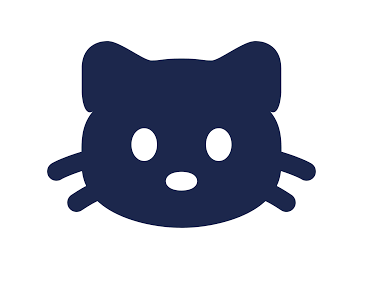What is cat food made of?
Cat food is specifically formulated to meet the nutritional needs of cats. Get details on What is cat food made of.
Key Ingredients in Cat Food
1. Proteins (Animal-Based)
Cats need high-quality animal proteins to thrive, as they are essential for muscle development, growth, and energy. Proteins in cat food are often derived from:
- Meat (chicken, beef, turkey, lamb)
- Fish (salmon, tuna, mackerel)
- By-products (organ meats like liver or heart)
Proteins also supply taurine, an essential amino acid that cats cannot synthesize on their own. Taurine is crucial for heart health, vision, and reproduction.
2. Fats and Oils
Fats are a primary energy source and help maintain a shiny coat and healthy skin. Cat food typically contains:
- Animal Fats: Such as chicken fat or fish oil, which are rich in Omega-3 and Omega-6 fatty acids.
- Plant-Based Oils: Like flaxseed oil or sunflower oil, which supplement fatty acids.
3. Carbohydrates
Although not a primary requirement, carbohydrates are often included as a filler and energy source in many cat foods. These come from:
- Grains (rice, corn, wheat)
- Legumes (peas, lentils)
- Starches (potatoes, sweet potatoes)
Grain-free formulas rely on alternative carbohydrates, such as peas or tapioca, to provide energy without gluten.
4. Vitamins and Minerals
Cat food is fortified with essential vitamins and minerals to ensure balanced nutrition:
- Vitamins: A, B-complex, D, E, and K to support immune function, vision, and metabolism.
- Minerals: Calcium, phosphorus, magnesium, potassium, and zinc to promote bone health, hydration, and proper nerve function.
5. Moisture Content
- Wet Food: Contains 70-80% water, which helps keep cats hydrated.
- Dry Food: Contains around 10% water, making it more shelf-stable but less hydrating.
6. Fiber
Fiber aids in digestion and helps prevent hairballs. Sources of fiber include:
- Beet pulp
- Pumpkin
- Psyllium husk
7. Additives and Preservatives
- Natural Additives: Such as vitamin E (tocopherols) to preserve freshness.
- Artificial Preservatives: BHA or BHT (used in some commercial brands).
- Flavor Enhancers: Such as animal digest, to make the food more palatable for picky eaters.
Types of Cat Food and Their Composition
- Dry Cat Food (Kibble)
- High in carbohydrates.
- Long shelf life.
- Crunchy texture promotes dental health.
- Wet Cat Food (Canned or Pouch)
- High in protein and moisture.
- Ideal for hydration and palatability.
- Raw Cat Food
- Mimics a cat’s natural diet, focusing on raw meat, organs, and bones.
- Often supplemented with essential vitamins and minerals.
- Homemade Cat Food
- Typically consists of cooked or raw meat with added supplements.
- Requires careful planning to ensure complete and balanced nutrition.
Common Ingredients to Avoid in Cat Food
Certain ingredients can be harmful or unnecessary for cats:
- Artificial Colors and Flavors
- Excessive Fillers (low-nutrient carbohydrates like corn or soy)
- Onions and Garlic: Toxic to cats in any amount.
- Chocolate or Caffeine: Highly toxic.
Final Thoughts
Cat food is crafted to ensure your furry friend receives a balanced and complete diet. Whether you opt for wet, dry, or raw food, always choose products that meet the nutritional standards set by organizations like AAFCO (Association of American Feed Control Officials). Consulting your veterinarian is also essential to select the right food tailored to your cat’s age, health, and dietary needs.
Customers also view this
- How to Treat Lice in Cats Home Remedies
- What food does cat eat?
- Paw Paw cat food made in which country?
- Reflex cat food made in which country?
- How Much Cat Food Should I Feed My Kitten?
- How much dry food to feed a cat?
